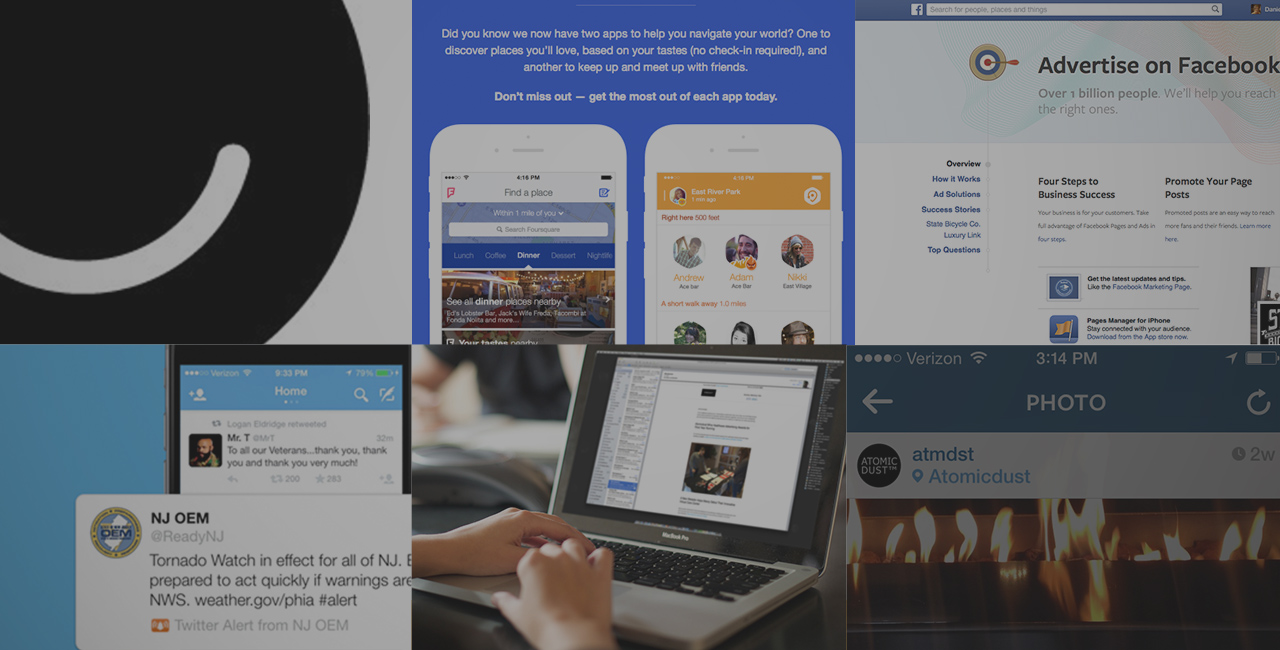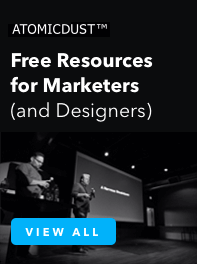Six Social Media and Digital Changes to Be Aware of in November 2014
Keeping up with today’s lightning-fast social media and digital landscape is no easy task. Luckily, Atomicdust is here with a quick rundown of six major changes that have come about in the last few weeks.
Facebook cuts back on ads…sort of.
Facebook recently announced that it will filter out overly promotional, non-paid posts from appearing in users’ News Feeds starting in January. That means fewer posts pushing a product or service, asking users to enter contests or even suggesting they tune into a TV show.
Specific details around how Facebook’s new algorithm will work haven’t been released (like, where does this all end? Aren’t all calls to action ultimately thinly veiled promotions?), but the network insists that creative, engaging posts will still appear in the News Feed. For more on that subject, read our tips to get your content in Facebook News Feeds.
One thing is clear for brands – if you want to ensure reach for your content, you need to pay for it.
Organic reach on Facebook has already dwindled over the last year or so; according to some reports, when a brand publishes content, only 2-8% of its fans see it. This change will likely send that number plummeting and will push more marketers to turn to paid advertising.
Which leads us to this question: will cutting back on the number of unpaid “ads” in order to create a more engaging News Feed experience really just result in users seeing more paid advertisements?
Ello? Anybody out there?
In September, people early adopters started talking about the next “Facebook killer,” Ello. Created by a group of artists and programmers, the new social network functions similarly to Facebook, Twitter or Google Plus in terms of sharing and following other users, with one caveat – no ads. Ever. And no selling data. Ever.
Ello was invite only, leading people to beg for invites on the very networks it claimed to be replacing, and even selling invites on eBay. But is Ello really the next great social network, or is the invite-only network popular because you need an invitation?
Based on initial usage data, the folks at RJMetrics think Ello actually has staying power, because its new user acquisition and activity is in line with what we’ve seen from successful social giants Twitter and Instagram.
Instagram makes some edits.
It’s a feature that Facebook didn’t add for years, and one that is still unavailable on Twitter, but now Instagram will allow users to make edits to their published posts. Users can edit the captions on photos by tapping the menu button […] underneath a post and selecting “edit.”
This change has many marketers (ourselves included) wondering if/when more brand manager-friendly changes will occur, like the ability to manage multiple accounts, allowing links in comments or access to data on post clicks, likes and comments.
Facebook goes to work.
Are you allowed to use Facebook at work? If not, your company may need to change their policy. Facebook is reportedly working on a new website focused on business networking, document sharing, email and chat.
Although Facebook has not confirmed anything, supposedly the concept is already in use internally at their own offices. The real question is whether users (and their bosses) will be able to look beyond the baby photos and Candy Crush invites to see Facebook as something more professional.
Twitter gets some new features.
With millennials flocking to Instagram and Snapchat and WhatsApp, the once popular Twitter has seen slow user growth in recent months. The company is hoping to change that with a string of new features, including:
- Timeline Highlights, an algorithm of top stories users may have missed while not using the app
- Notifications for breaking news, trending topics, weather and more – something the app has experimented with before, but has not yet rolled out globally
- Tools for taking, editing and sharing video within the Twitter platform
- Improvements to Direct Messages
- And more standalone apps, which leads us to…
Are two apps better than one?
This summer, the popular check-in app Foursquare split into two separate apps. Recommendations stayed on the original Foursquare app, now focused on discovery, and social features like checking in moved to a brand new app, Swarm. Facebook also split its messaging function from the original app with the launch of Messenger.
Users flocked to social media to complain, but was the backlash reflected in usage?
For Foursquare/Swarm, reports suggest that users are on board with the change. Aside from spikes on their launch days, both apps have remained steady in their download rankings in the App Store (and Swarm, which launched at #1, has remained in the Top 100 for social networking). Swarm has grown to more than 2.9 million unique mobile users, and Foursquare has seen growth in usage of new app-specific features like Tastes and Tips.
Facebook, on the other hand, hasn’t been so lucky. Despite performing well in app downloads, many believe that adoption of Messenger is more about being forced to change behavior than it is about enthusiasm. Add this to the growing list of reasons users are starting to resent their favorite social network.
Stay tuned for more of the latest social media and digital marketing news from Atomicdust, and don’t forget to read our post on the end of Google Authorship and what this means for search marketing.




